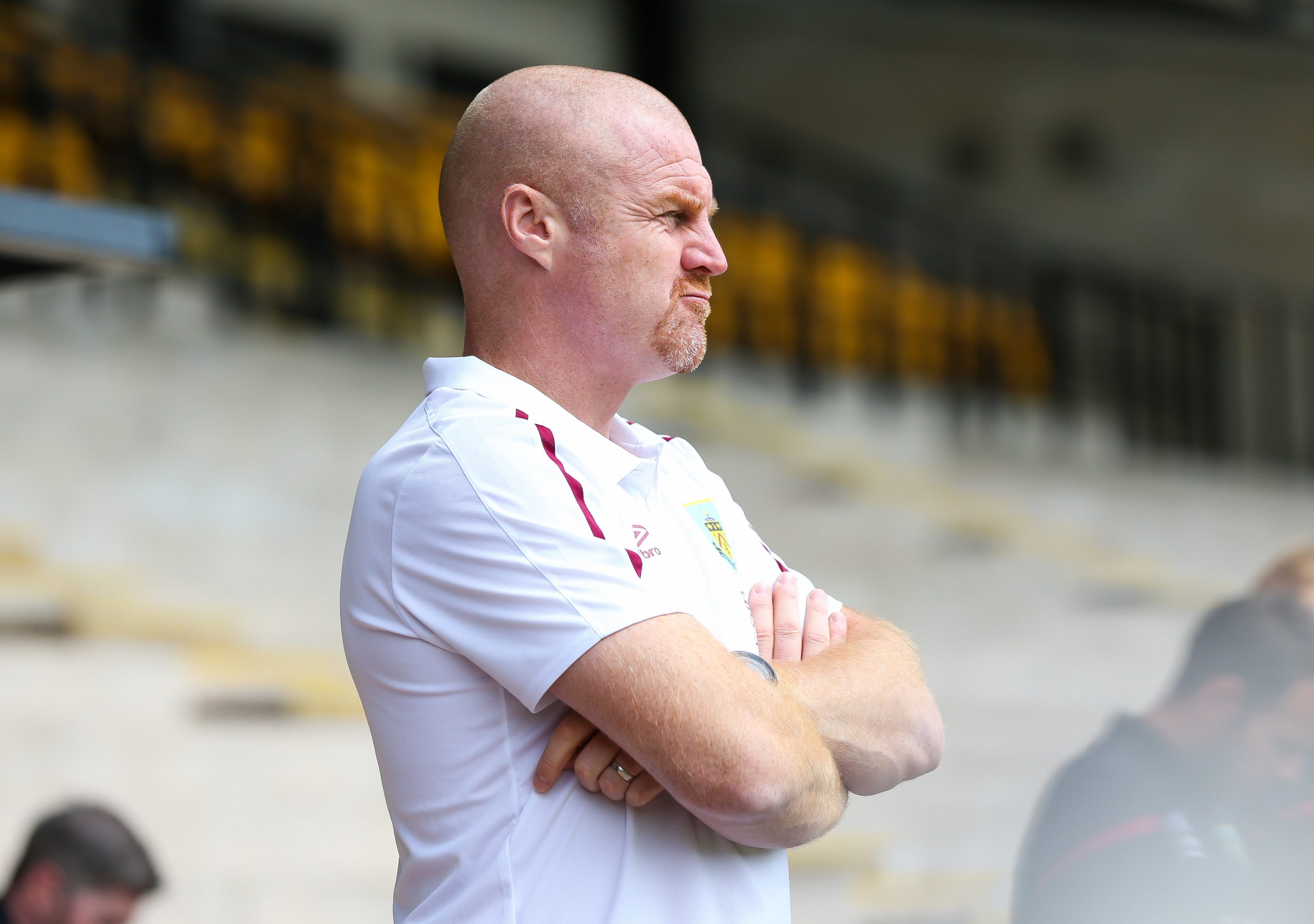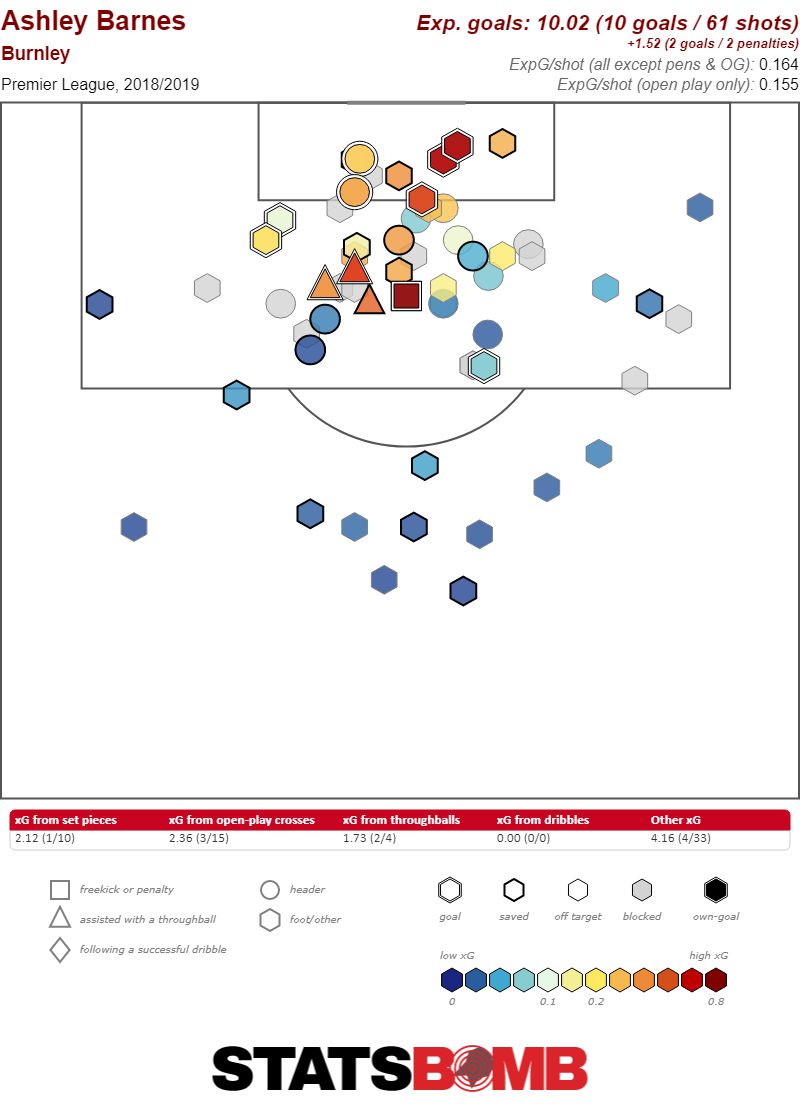Sean Dyche’s voice has always been slightly too gruff for Burnley to be adopted as a true fairytale team.
A truly awful start to the season dispelled whatever fairy dust seemed to have been sprinkled over Turf Moor; Joe Hart may not have been a perfect ‘keeper, but he took a lot of flak that should have been reserved for the team.
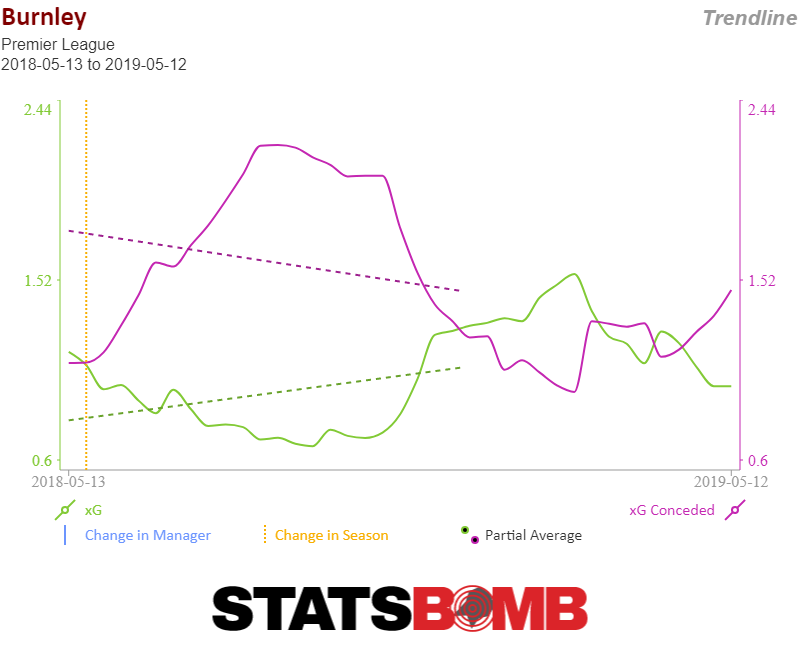
Over the first few months of the season, Burnley’s defence was the worst in the league, conceding more expected goals per game than even Fulham. Fulham!
Of course, Hart wasn’t that good. StatsBomb’s figures for goals saved above what the average goalkeeper would have him as worse than league average, 21st out of 26 stoppers who played more than 600 Premier League minutes. Tom Heaton was above league average, seventh in the list, just above David de Gea.
In attack, the rise of Ashley Barnes matches nicely with the recovery of the team as a whole. Over those first few months of the season, Barnes played almost exclusively as a substitute. His performances didn’t justify a change to the situation – 1.84 shots per 90 minutes with an average quality of 0.10, both slightly below league average levels for a striker.
Get to December and the spirit of Yuletide entered the Austrian international’s system. Over December and January, he nudged his shooting rate up to 2.25 per 90, now a firm choice as starter, but his average shot quality doubled to 0.20 expected goals. Things tailed off a little after that, still getting shots – 2.35 per 90 – but with a shot quality down to an average of 0.15. But overall that meant Ashley Barnes (Ashley Barnes of all people!) had quite a good season.
It’s hard to know, at this point, what Burnley should be hoping for. They’ve been in the Premier League for long enough now that their expectations feel like they should be higher than merely avoiding relegation, and their surprisingly good 2017/18 just adds to that.
Their incoming transfers have been so Burnley it’s approaching parody levels (parodies which Burnley fans are well tired of). There’s Erik Pieters from Stoke, Burnley born and bred Jay Rodriguez from West Bromwich Albion, two 19-year-old right-backs from the English lower leagues, 22-year-old Bailey Peacock-Farrell from Leeds to replenish the goalkeeper stocks after Tom Heaton’s sale to Aston Villa, and 21-year-old Adam Phillips signed on a free after his contract with Norwich ended.
Clearly, only some of these will see the first-team this season. Pieters, one would imagine, will be a dependable but unexciting full-back option. Jay Rodriguez sounds more interesting, but a surface-level look at his stats shows he that his output was a little better than league average but he was hard-working. So, pretty Burnley.
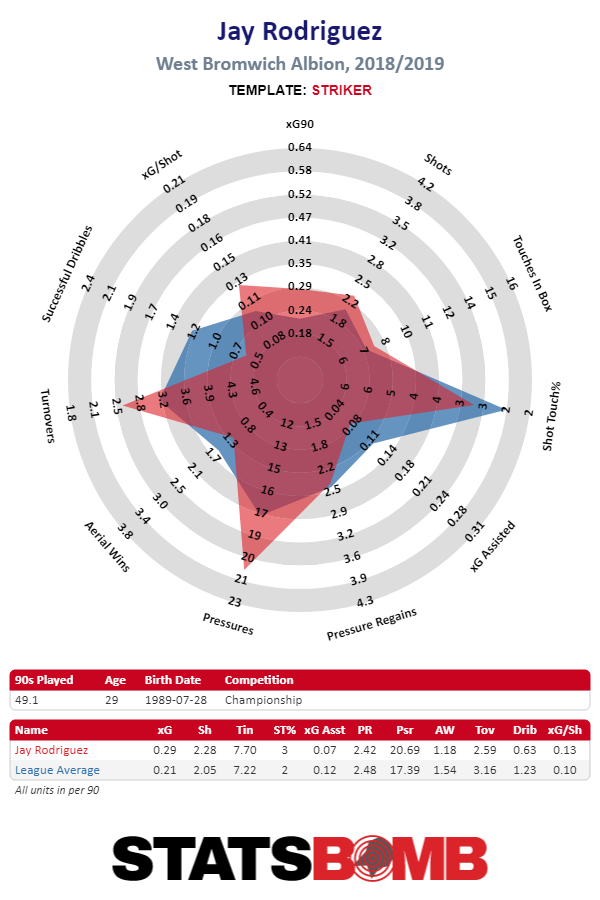
It feels a little like Dwight McNeil will be the bright spark of hope again then. The 19-year-old barely played until the new year but his emergence on the scene gave Burnley fans something to be excited about.
He is, though, a quite typically Burnley kind of exciting. The areas where his stats were above league average last season were pressure regains (where the team gets possession within five seconds of the player applying pressure), dribbles, and having few turnovers. Granted, being close to league average for open-play expected goals assisted on a team like Burnley, at just 19, is pretty noteworthy too.
In an earlier version of this article, I made a cheap joke about the unusual Britishness of Burnley's transfers. It's probably a better use of time to instead consider why, in a particularly diverse Premier League, Burnley's transfer policy is still so centred on the British Isles. This is particularly peculiar given that the club aren't exactly wealthy and British players (or, perhaps, players from the British leagues) tend to cost more than what comparable talent coming from overseas would do.
The theory seems to be that English as native language makes communication - tactical and motivational - easier. Their major non-English language natives have each been in the country for half a decade or more, which supports this argument.
Despite seeming counter-intuitive, this British-premium that they have to pay could be a financial consideration too. Part of a successful transfer strategy is minimising the risk, avoiding deals that become busts. Language and cultural barriers exist (even if the effects of them are, at times, overblown), moving to a new country is disruptive, and moving leagues and playing against new players always involves more guesswork than the alternative.
That's the rationale, at least. Has it/will it work? Well, the extra money that buying local requires usually means buying outside of peak age. Sometimes, that's younger, sometimes older. With Burnley, it seems to be mostly older. Dwight McNeil was the only player under the age of 25 to play for the club in the league last season (we’re not counting Charlie Taylor, who turned 25 in September).
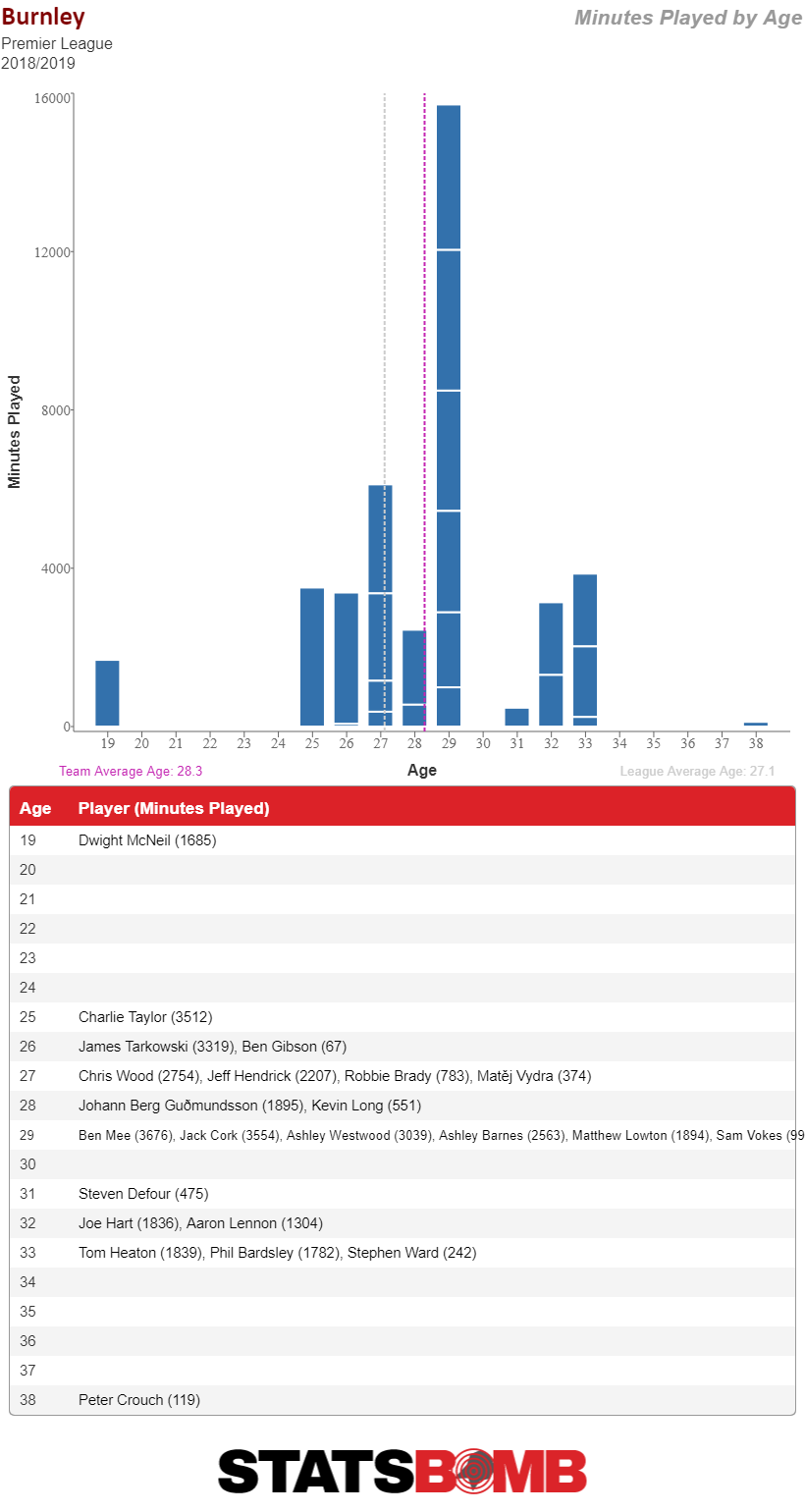
That spike at the 29-year-old mark is a big part of Burnley’s core of players. Ben Mee, Jack Cork, Ashley Westwood, Ashley Barnes, and Matt Lowton are all there, and Jay Rodriguez will join them there. Sam Vokes left in January, replaced by 27-year-old Matej Vydra. Johann Berg Gudmundsson, one of the few other creative players in the squad, is 28. If Burnley don’t start seriously renewing their squad then they could have some major difficulties soon.
Bringing in the two teenage right-backs is a start, given that starting choices Matt Lowton and Phil Bardsley are aged 30 and 34 respectively. Ryan Cooney and Joel Senior are the newbies, but only a fool would pretend to know how well they did for Bury and Curzon Ashton last season, those teams of the English fourth and sixth tiers respectively. Outside of that, we'll have to see how it goes.
The constant references throughout this preview of ‘this is very Burnley’ point to the fact that they’re pretty predictable. Over 26% of Burnley’s expected goals came from headers last season, and to put that in perspective it was just under 17% for their opponents.
Where they differed last season from the norm, it was mostly in the wrong direction. The gap between the expected goals for and expected goals against doubled from 2017-18 to 2018-19. In the season they reached the Europa League, their expected goal difference was -0.27 per game. Last season, it was -0.53.
Defensive issues were the main feature, and the difference between their 2017-18 season to the first, dreadful months of 2018-19 are so stark they were beheaded in Westeros. They started defending higher up the pitch, but pressed less intensely. The amount of shots they conceded from counter-attacks almost doubled, from 1.08 per game to 1.92. Letting their opponent gets shots with no defenders in the way got even worse, shooting (literally) from 1.68 per game to 3.85.
Come December and Ashley Barnes’ aforementioned ascent to acedom, and Burnley were back conceding 2.2 clear shots per game. Not quite as good as the season before, but well in the right direction.
If parts of this have read like a season review of 2018-19, it’s both because the squad is pretty much the same as last year and because it’s hard to know where the club are heading. They beat expectations first by staying up and then by making the Europa League. And then they blew up for half a season. Will they be back to normal now that they don’t have Europe to focus on? Or did those few months starting 2018-19 show that they’re vulnerable enough to fall apart again?
If they keep to their performance level in the latter half of the season, then Dyche’s side should give themselves some room, points-wise, over the relegation zone. It doesn’t feel like they’ll have much more to aim for than that.
Header image courtesy of the Press Association
